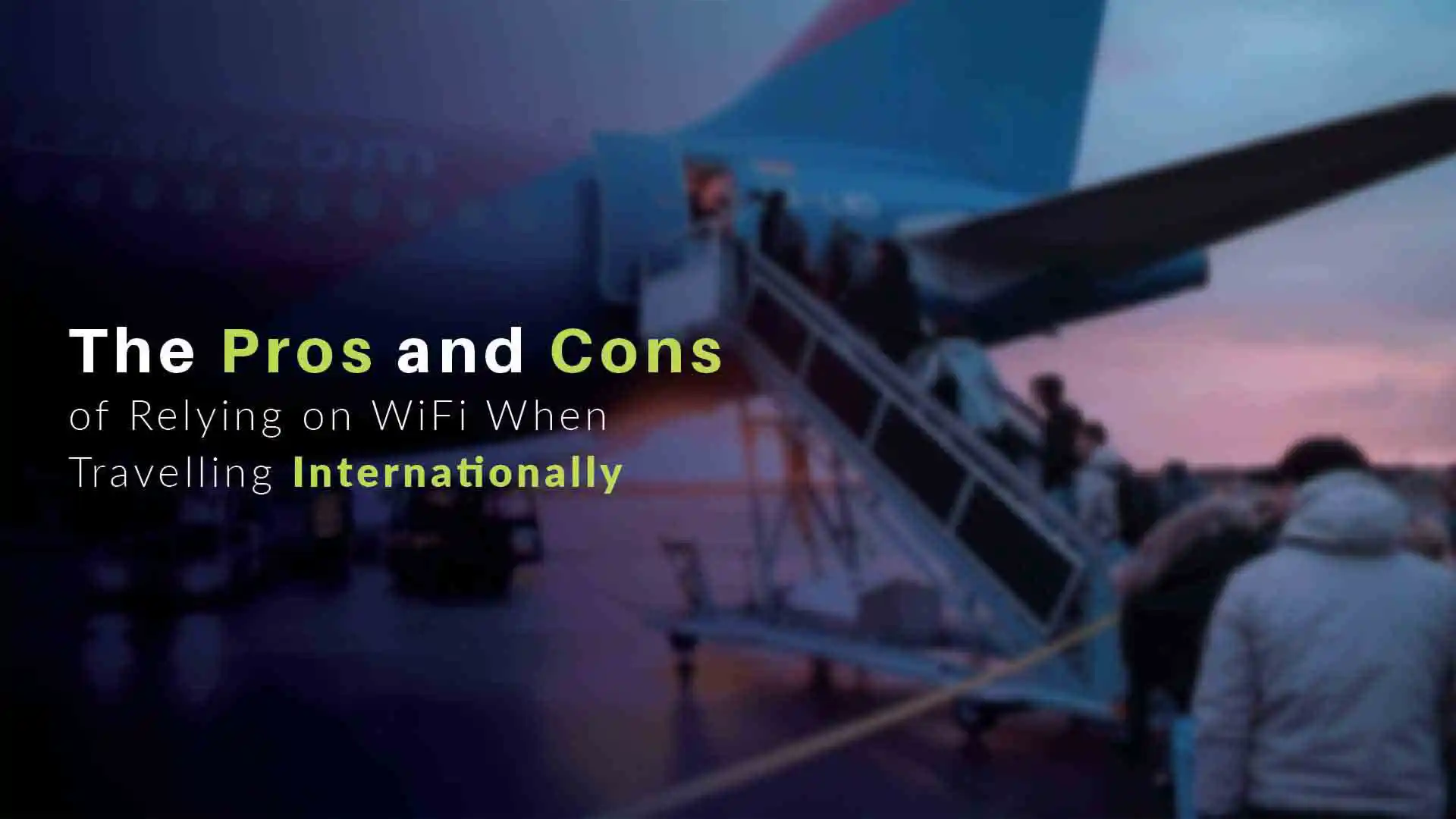
 3798.0 views
3798.0 views
The Pros and Cons of Relying on WiFi When Travelling Internationally
When travelling internationally, staying connected is a top priority. Whether it's for staying in touch with loved ones, accessing maps and travel information, or sharing your adventures on social media, having reliable connectivity is essential.
One popular option that travellers often consider is relying on WiFi networks. While WiFi can provide convenient access to the internet, it's important to weigh the pros and cons before making a decision. In this article, we will explore the advantages and disadvantages of relying on WiFi when travelling abroad.
Pros of Using WiFi for International Travel:
- 1. Cost Savings: One of the biggest advantages of relying on WiFi is the potential cost savings. Many establishments, such as hotels, cafes, and restaurants, offer free WiFi access, allowing you to stay connected without incurring additional charges.
- 2. Familiarity and Convenience: Most travellers are familiar with using WiFi and find it convenient to connect their devices seamlessly. Once you have accessed a WiFi network, your devices will automatically connect to it whenever it's available, providing a hassle-free connectivity experience.
- 3. High-Speed Internet: In areas with robust WiFi infrastructure, you can often enjoy high-speed internet access, allowing you to browse websites, stream videos, and upload photos quickly and effortlessly.
Cons of Relying on WiFi for International Travel:
- 1. Limited Coverage: One of the major downsides of relying on WiFi for international travel is the limited coverage it offers. While WiFi may be readily available in certain popular tourist areas or major cities, venturing off the beaten path can leave you disconnected. Many remote areas, rural regions, or less developed countries might have sparse or unreliable WiFi networks, making it difficult to access the internet when you need it most. Relying solely on WiFi can hinder your ability to communicate, navigate, or access important information during your travels.
- 2. Paid WiFi Access: While many establishments offer free WiFi, some may charge a fee for access. This can add up, especially if you're travelling for an extended period or frequently visiting paid WiFi hotspots. Relying solely on paid WiFi can strain your travel budget and limit your ability to allocate funds for other essential expenses or experiences. Moreover, the price of WiFi in certain regions might be disproportionately high, making it an impractical or unaffordable option for some travellers.
- 3. Security Risks: Public WiFi networks are often unsecured, making them vulnerable to potential security threats. Hackers can exploit these networks to gain access to your personal information, such as passwords or credit card details. It's crucial to exercise caution and avoid transmitting sensitive data over unsecured WiFi connections.
- 4. Inconsistent Quality and Speed: WiFi connections can vary significantly in terms of quality and speed, even within the same location. Overburdened networks or outdated infrastructure in certain regions can result in sluggish internet speeds and unreliable connections. Slow and unreliable WiFi can be frustrating when trying to perform essential tasks like booking accommodations, researching local attractions, or staying in touch with loved ones. It may hinder your ability to efficiently plan your itinerary or deal with unexpected travel situations, leading to unnecessary stress or delays.
Our Recommendation: eSIM - The Best of Both Worlds:
While WiFi can be a convenient option, it's important to have a reliable backup plan for staying connected during your international travels. This is where eSIM technology comes into play. eSIM, or embedded SIM, offers the advantages of both local connectivity and flexibility. When you buy eSIM, you get latched on to the local network provider of your destination country. To explain it better, for example, if you’re going to the US and you take an eSIM, you’ll have to select a plan based on data allocation and validity. You can also check which network operator you will get latched on to. For example, you chose Verizon’s 20 GB data plan with 30-day validity.
So now, when you land in the US, you get automatically connected to Verizon, and you don’t have to pay roaming charges.
With an eSIM, you can enjoy seamless connectivity in over 198+ countries without the need to switch physical SIM cards or rely solely on WiFi networks. eSIM provides a local data plan, eliminating the need for roaming charges and offering cost-effective rates for data usage, calls, and texts.
Additionally, eSIM offers enhanced security, ensuring a safer browsing experience compared to public WiFi networks. By opting for an eSIM, you can enjoy the benefits of local rates, seamless roaming-free connectivity, and enhanced security. Whether you're a frequent traveller or embarking on your first international trip, exploring the possibilities of eSIM technology can enhance your connectivity experience and ensure you stay connected wherever your travels take you.
Conclusion:
While WiFi can undoubtedly be a valuable resource for international travelers, relying solely on it comes with inherent drawbacks. Limited coverage, paid access, security risks, and inconsistent quality and speed are all factors that can negatively impact your travel experience. To ensure a smoother and more reliable journey, it is wise to consider alternative connectivity options such as eSIM technology. eSIM offers the advantages of local connectivity, flexibility, cost-effectiveness, and enhanced security. By diversifying your connectivity options and considering the pros and cons, you can make an informed decision that allows you to stay connected and enjoy your international travels to the fullest. So, before your next adventure, take the time to explore the possibilities and choose the connectivity option that best suits your needs. Happy travels!

 Home
Home Buy SIM
Buy SIM





